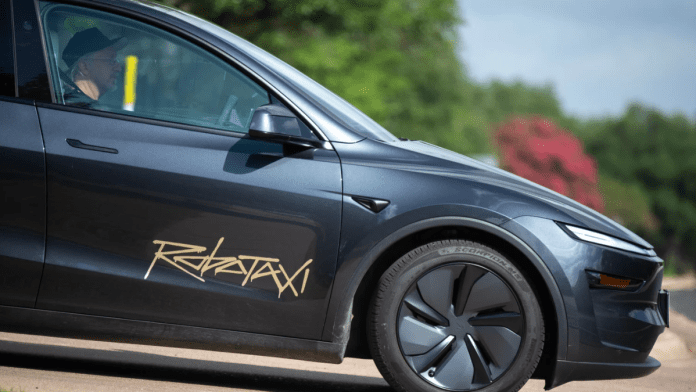🕒 Last updated on July 3, 2025
A Big Dream Meets a Small Launch
Tesla has spent years talking about self-driving cars. It claimed that its cars were already built to be robotaxis. The only thing missing, the company said, was a software update. This bold promise attracted huge attention—and even bigger investment. Many people believed Tesla would change the way the world travels.
This week, the company finally launched a robotaxi service in Austin, Texas. It is the first time Tesla has started charging for rides in its so-called self-driving cars. However, the launch was not what many expected. Only a small number of Tesla Model Y vehicles are in operation. These cars do not drive themselves entirely. A human “safety monitor” still sits inside each vehicle.
The robotaxis only serve a limited area in South Austin. And not everyone can book a ride. Only a few invited users can try the service for now. This makes the launch feel more like a small experiment than a big breakthrough. Tesla had often mocked its competitors for moving slowly. But now, it is doing the same—taking cautious steps in just one city.
A Stock Price Built on Dreams
Tesla’s core business is electric vehicles. But sales are not growing like they once did. In fact, some models have seen a decline. The Cybertruck launch did not go as planned. A promised low-cost model has not yet arrived. Despite all this, Tesla’s stock price remains high.
Much of that high price is based on belief. Investors think Tesla will one day lead the world in robotaxis and self-driving technology. Some experts say Tesla’s electric vehicle business is only worth around $50 per share. But Tesla’s stock trades at over $250. That means nearly 80% of the value comes from future hopes—especially about robotaxis.
One investment bank estimates that about $815 billion of Tesla’s market value is tied to robotaxi plans. That is based on expected future revenues, not profits. These revenues may not arrive for 10 to 15 years. And that future is far from certain. The robotaxi launch in Austin is now the first real test of those expectations.
If Tesla can prove that its robotaxis work safely and at scale, those hopes may be justified. But if the service grows slowly or faces issues, the company’s high value could come under pressure.
Changing the Story
Tesla always said that any of its cars could become a robotaxi. That was a big part of its sales pitch. The company told buyers their vehicles would someday make money for them—by driving passengers around with no one at the wheel.
But now, reports suggest Tesla is using special versions of the Model Y for its Austin robotaxi fleet. These cars appear to have extra equipment, such as added sensors and upgraded cameras. They may also include new communication tools. This raises a big question: Can regular Teslas really become robotaxis?
Political Fallout Hits Tesla in France—Lawsuit Claims ‘Swasti-Car’ Stigma Causes Social Harm
If Tesla needs to build new vehicles just for robotaxi use, it changes everything. It means higher costs and more time. It also raises doubts about whether the company can license its robotaxi system to other automakers, as it once hoped.
Other companies are also moving quickly. Some are already offering hundreds of thousands of rides every week in U.S. cities. These companies use more advanced hardware, like LiDAR, to detect the environment around them. Tesla avoided that technology to keep costs down. But that only works if Tesla can scale up fast. Right now, it hasn’t.
Early Problems and Rising Pressure
Since the Austin launch, a few problems have already come up. One “safety concern” has been reported on the City of Austin’s public dashboard. Some videos have shown the robotaxis breaking traffic rules. These incidents are now being reviewed by federal regulators.
These are early days, so some issues are expected. But Tesla is under more pressure than most. It is not just testing technology—it is defending a massive stock valuation based on that technology.
Other companies in the space are watching closely. One rival’s stock price jumped 25% this week, possibly because investors saw Tesla’s launch as weak. That shows how quickly confidence can shift.
Tesla’s robotaxi journey has finally begun. But it started small, cautious, and already under watch. After years of promises, Tesla must now prove it can deliver. The dream is no longer just a dream. It is now something the world can judge.

